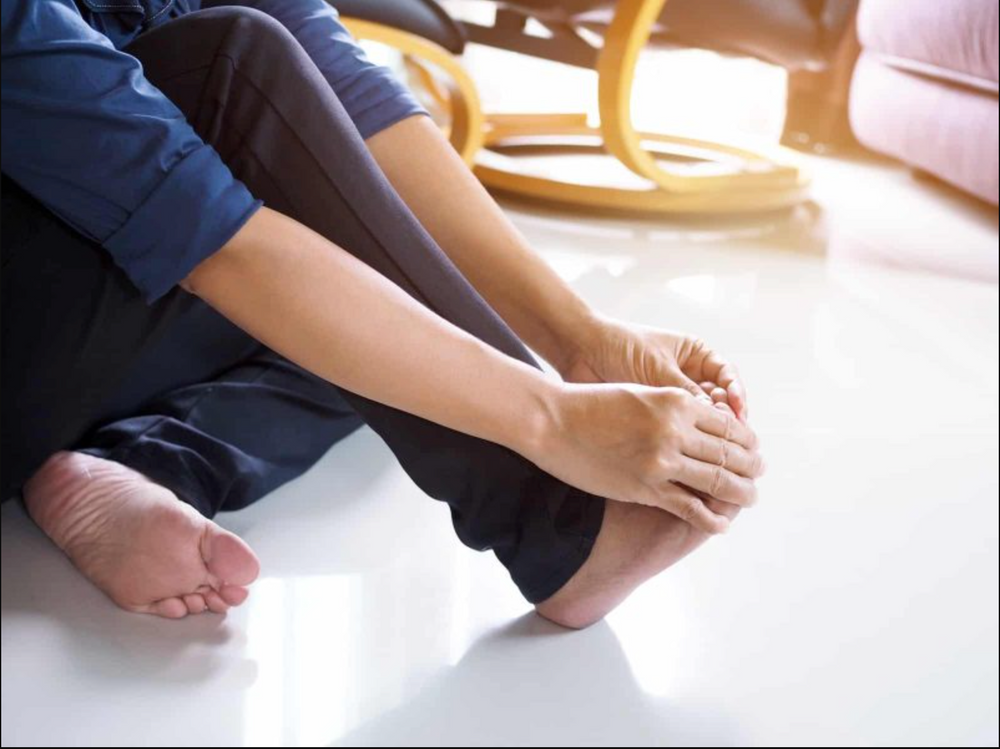
Have you noticed that one of the toes of your feet doesn’t look quite right? That instead of pointing forward, the toe is bent down with the middle portion curling up? Are you wondering what’s going on? Well, you may have a condition called hammertoe.
Take heart, you’re not alone. Hammertoe is one of the most common deformities of the foot, with more than 60 million Americans suffering from the condition. Although some are born with the defect, hammertoe usually develops because of certain factors, starting as a mild deformity that gets progressively worse. There may even come a point when the pain becomes excruciating, making walking a challenge.
Because hammertoe doesn’t happen overnight, you may be able to avoid getting it if you know what typically causes the condition.
What Is Hammertoe?
Hammer toe, which is also called contracted or rotated toe, is a condition that occurs because of an imbalance in the tendons, muscles, or ligaments that usually keeps the toes straight.
With this deformity, your toe no longer lies flat. Instead, it bends upwards in the middle joint in a way that makes it look like a hammer. That’s where the name came from, by the way. Usually, it affects the second, third or fourth toe.
At first, your hammer toe may still be flexible and might respond to simple treatments. However, if left untreated, the toe can turn rigid and may require surgical intervention to fix the condition.
Because hammertoes worsen as time passes and they don’t get better on their own, they should receive attention early enough so you won’t have to resort to more invasive treatment options.
Here are the 6 most common causes of hammer toe
- Long-term use of ill-fitting shoes
- Toe length
- Existing medical conditions Bunions
- Bunions
- Genetics
- Muscle imbalances
1. Long-term use of ill-fitting shoes
Wearing shoes that don’t fit well is by far the most common cause of hammer toes. High- heeled shoes or too tight ones can crowd the smaller toes and push them into a bent position. When you continue to wear poorly-fitting footwear, you might not be able to straighten the bent toe even after removing your shoes.
The longer you wear improper footwear, the higher the risk that your hammertoe may require surgery to treat the condition.
2. Toe length
A second toe that’s longer than the first toe can lead to hammertoe as the longer toe tends to bend as it overlaps its shorter neighbor.
3. Existing medical conditions
Those who suffer from health issues like diabetes and arthritis have higher risks of developing hammertoes. Diabetes causes nerve and circulation problems which, in turn, lead to foot problems, including hammer toes.
Meanwhile, arthritis in the toe joints can cause hammertoes as the joint’s inflammation or destruction can cause instability to the joint.
4. Bunions
A bunion is a bony lump that forms at the side of the big toe. The growth causes the tip of the big toe to overlap and crowd the other toes, leading to hammer toes.
5. Genetics
Hammer toes sometimes run in families. So if any of your kin have this condition, don’t be surprised to find yourself developing the deformity as well.
6. Muscle imbalances
The muscle imbalance in your foot leads to instability which causes the toes to contract.
Over time, this can lead to hammertoes.
How Do You Treat Hammertoes?
Now that you know what commonly causes hammer toes, let’s discuss your treatment options.
If you can still flex the affected toe, your doctor may recommend the following remedies.
Change your footwear: Ditch those shoes that are too short, too narrow, or have heels that look like mini-skyscrapers, as these types of footwear tend to push your toe against the front of the shoe. Instead, choose shoes with soft, roomy toe boxes. The heels should be no higher than two inches.
Do some foot exercises: Certain exercises can help boost the strength of your foot muscles. Picking up marbles with your toes or doing towel curls are some examples. In a towel curl, you lay a towel under your foot and crumple it using your toes.
Take some medications: Over-the-counter pain relievers, such as ibuprofen, can help manage the pain and joint inflammation.
Use orthotic devices: Custom shoe inserts and arch support foot orthotics may help reduce pain and prevent the hammertoe from worsening.
For severe hammer toe cases, where the toe joint has turned rigid and where non-surgical interventions no longer would work, this is where surgery is often taken into consideration.
Hammer toe can be painful and unsightly, but the good news is, you don’t have to live with it forever. The condition is reversible, and if you’re lucky, simple treatments may be enough to make it reverse course and get back to normal.


Leave a comment
Also in Blog
Effective Remedies To Ease Plantar Fasciitis Pain
October 17, 2024
Continue reading
Can Your Shoes Cause Plantar Fasciitis?
October 17, 2024
Did you know that your favorite shoes may actually be what is responsible for your plantar fasciitis and related issues? It’s not the best news, but learning this may help you stop hurting your own feet without knowing it. But the good news is that you don’t have to throw your shoes out if that is the case for you.
Continue reading
6 Causes Of Heel Pain
October 17, 2024
Continue reading